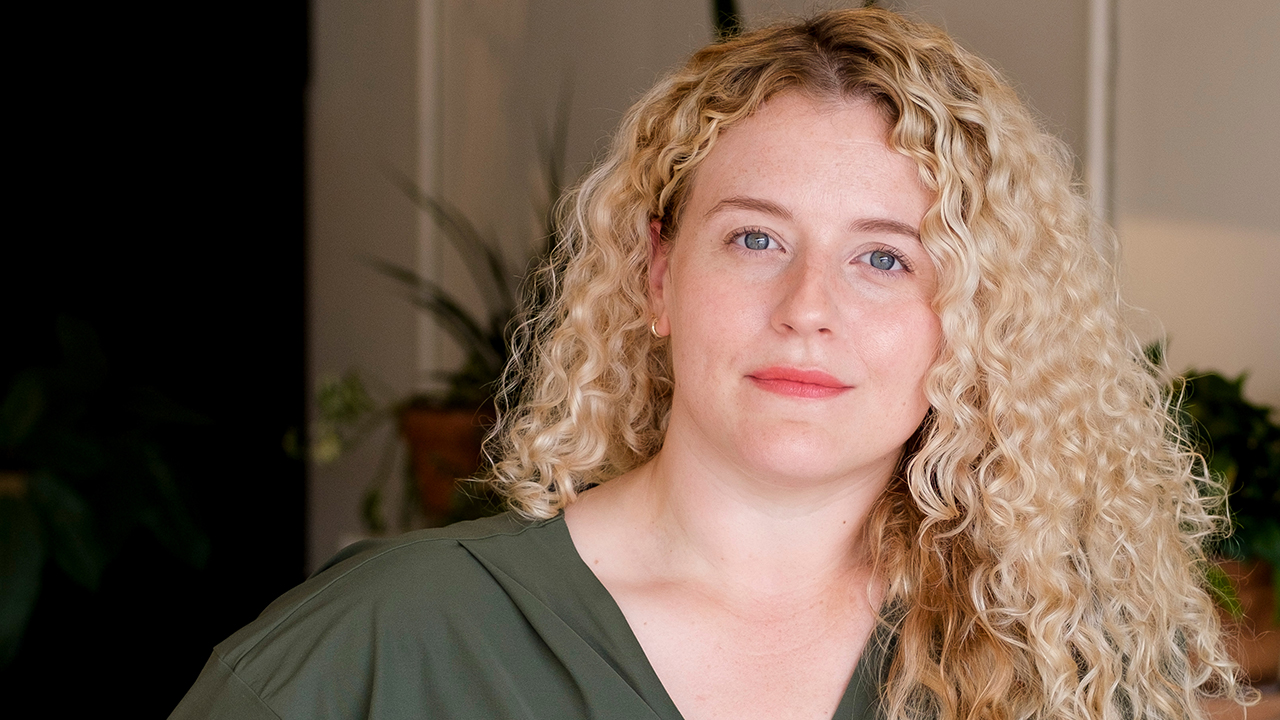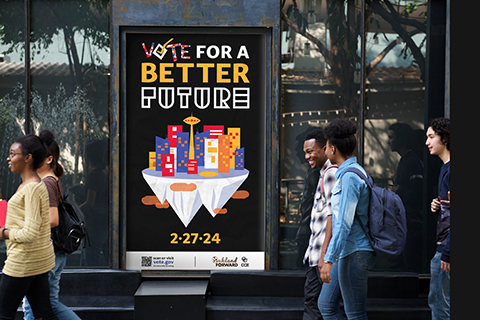Department of Art, Art History and Design updates name to reflect design program growth

Meaghan Barry was the first tenure-track Graphic Design faculty member hired by Oakland University more than 10 years ago.
Barry has seen the design program grow exponentially since then and now the name of its department will reflect that growth, as it has been updated to the Department of Art, Art History and Design.
Barry, who is the current chair of the department and associate professor of graphic design, said the graphic design program went from graduating a handful of majors per year, to now accounting for roughly 70% of the department.
“Over the past 10 years graphic design has really become the biggest part of our department, but it wasn’t recognized in the department title,” Barry said. “Most people understand or recognize the word design now and a lot of our competitors are using design in their titles. To continue to be competitive and accurately reflect who is in our department, we needed to include design in the name.”
Changing the name to include design, instead of graphic design was a calculated decision, which will allow the program to adapt as the world of design continues to evolve.
.jpg)
Poster designs by graphic design students
“It was important that we use the term design more generally,” Barry said. “Graphic design is a term that can be used interchangeably with a lot of other terms, things like communications design, visual design or some people call it two-dimensional design. There's no set term for graphic design.
“Graphic designers can go into a variety of fields, sometimes they become motion graphic designers or typographers,” Barry added. “Designers can find their niche and it might not necessarily be called graphic design. The department thought that by using the term design, it felt like a more inclusive umbrella term that reflected what designers actually do. Things shift and change over time, so it allows us to not rename ourselves every couple of years when the industry comes up with a new fun word to call graphic design.”
Barry also expects the name change to make it easier for prospective students to find the program.

An example of a student's work
“I want prospective students, who type in design or graphic design to know our department is exactly where they belong,” Barry said. “Especially knowing that some of the prospective students might not know exactly where graphic design or design lives. The idea we are findable, is exciting to me.”
Barry believes being a part of the same department as art and art history has its benefits for design majors, and so does being part of the College of Arts and Sciences.
“I think being a liberal arts backed design program is a one of the biggest strengths of our program,” Barry said. “Graphic designers do not work in a bubble. Designers often serve clients who have completely different areas of expertise. For example, we might work with someone from psychology, history, business or science, taking their complex information and designing it in a way that effectively reaches their audience. Our liberal arts environment allows students to practice collaborating with all different types of people, working in diverse fields like this. Their baseline knowledge acquired from general education courses and other classes outside of our department will help them better serve their future clients.
Another strength of the design program, is its community engagement. Students often work with non-profit organizations in their courses. This is mutually beneficial as it helps meet the non-profit organization’s needs and gives the students professional experience.
“In many of our classes, students are getting experience working in real world client situations,” Barry said. “In past semesters, my students through various courses have worked with over 20 different non-profits, from homeless shelters to humane societies to arts organizations. This upcoming semester, my Graphic Design II students will be collaborating with the OU men’s and women’s basketball teams. My colleagues are doing the same thing. I think we really understand the value of making sure students get real-world experience before they graduate.”
Barry expects the design program to continue to grow and adapt to the world of graphic design.
“I’m just really excited to see what the next 10 years for the design program bring,” Barry said. “For me, I feel like over the last 10 years we’ve shown what we can do. Now, let’s keep moving forward and see what the next 10 years brings.”

 September 05, 2024
September 05, 2024







